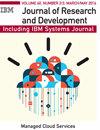Emergencies do not stop at night: Advanced analysis of displacement based on satellite-derived nighttime light observations
IF 1.3
4区 计算机科学
Q1 Computer Science
引用次数: 6
Abstract
Around 68.5 million people are currently forcibly displaced. The implementation and monitoring of international agreements, which are linked to the 2030 agenda (e.g., the Sendai Framework), require a standard set of metrics for internal displacement. Since nationally owned, validated, and credible data are difficult to obtain, new approaches are needed. This article aims to support the monitoring of displacement via satellite-derived observations of nighttime lights (NTL) from NASA's Black Marble product suite along with an short message service (SMS)-based emergency survey after Cyclone Idai had made landfall in Beira, Mozambique, in March 2019. Under certain conditions, the spatial extent of power outages can serve as a proxy for disaster impacts and a potential driver for displacement. Hence, information about anomalies in NTL has the potential to support humanitarian decision-making via estimations of people affected or the coordination of rapid response teams. Despite initial issues related to cloud cover, we find that around 90% of Beira's power grid had been affected. In collaboration with the Internal Displacement Monitoring Center, we use these findings to establish a framework that links NTL observations with existing humanitarian decision-making workflows to complement ground-based survey data and other satellite-derived information, such as flood or damage maps.紧急情况不会在夜间停止:基于卫星夜间灯光观测的位移高级分析
目前约有6850万人被迫流离失所。与2030年议程(如《仙台框架》)相关的国际协议的执行和监测需要一套标准的国内流离失所衡量标准。由于很难获得国家拥有、经过验证和可信的数据,因此需要新的方法。本文旨在支持在2019年3月飓风“伊代”登陆莫桑比克贝拉后,通过美国国家航空航天局“黑色大理石”产品套件的卫星夜间灯光观测(NTL)以及基于短信服务(SMS)的紧急调查来监测位移。在某些条件下,停电的空间范围可以作为灾害影响的指标和流离失所的潜在驱动因素。因此,有关NTL异常情况的信息有可能通过估计受影响人员或协调快速反应小组来支持人道主义决策。尽管最初的问题与云层有关,但我们发现贝拉约90%的电网受到了影响。我们与国内流离失所监测中心合作,利用这些发现建立了一个框架,将NTL的观测结果与现有的人道主义决策工作流程联系起来,以补充地面调查数据和其他卫星衍生信息,如洪水或破坏图。
本文章由计算机程序翻译,如有差异,请以英文原文为准。
求助全文
约1分钟内获得全文
求助全文
来源期刊

IBM Journal of Research and Development
工程技术-计算机:硬件
自引率
0.00%
发文量
0
审稿时长
6-12 weeks
期刊介绍:
The IBM Journal of Research and Development is a peer-reviewed technical journal, published bimonthly, which features the work of authors in the science, technology and engineering of information systems. Papers are written for the worldwide scientific research and development community and knowledgeable professionals.
Submitted papers are welcome from the IBM technical community and from non-IBM authors on topics relevant to the scientific and technical content of the Journal.
 求助内容:
求助内容: 应助结果提醒方式:
应助结果提醒方式:


